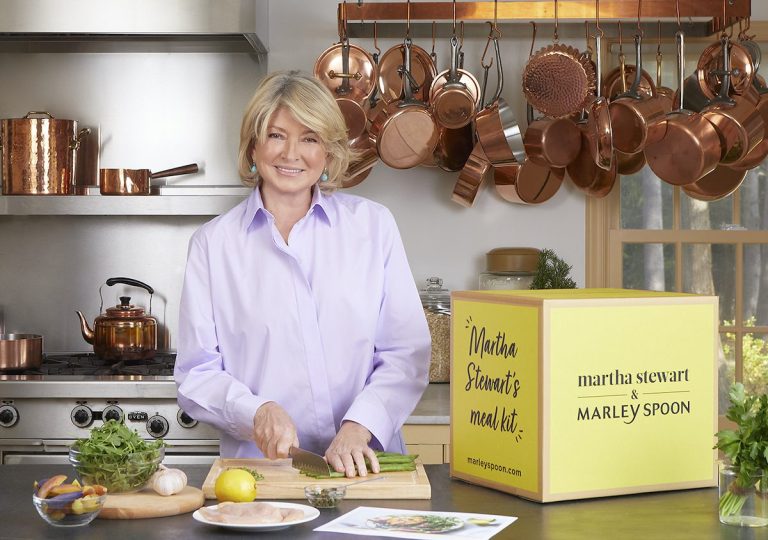
Today’s consumers want to get their food needs met with as little time and effort as possible.
With this shift toward convenience, the traditional meal kit subscription model, which could save a couple trips to the grocery store — but which often relies on lengthy and involved meal preparation and production — is beginning to change.
“What meal kits were based on was this sense of convenience — we solve the what’s for dinner question for people,” Julie Marchant-Houle, U.S. CEO of multinational meal kit company Marley Spoon, told PYMNTS in an interview. “[Now], we’re seeing expansion into different meal occasions; we’re seeing a demand for ready-to-eat meals across the industry; we’re seeing even more and more brands looking to offer incremental items that could be added to the basket. So, I think convenience is a big theme that has it just continuing to accelerate.”
Certainly, consumers expect to be able to get their food without as much effort, challenging meal kits to adapt to suit the times. PYMNTS’ 2021 How We Eat playbook, created in collaboration with Carat from Fiserv, found that consumers are now 31% more likely to buy meals for delivery or pickup than they are to dine on-site. Additionally, 43% of all consumers reported that they were ordering home delivery for their restaurant meals or groceries more often they did before March 2020.
Read more: Restaurants and Grocers See Path to Picking up 200 Million New Customers
Less Prep, More Free Time
One of the ways that meal kit companies are looking to adapt to this demand for convenience is by launching ready-made options that require no preparation beyond heating them up.
“Even though people are still working from home in many cases … they still don’t necessarily want to be tied up in the kitchen for hours at a time,” said Marchant-Houle.
Blue Apron announced the addition of its frozen meals as a subscriber add-on in September.
See more: Blue Apron’s New Frozen Meals Add Value for High-Churn Subscription Service
HelloFresh began selling heat-and-eat meals back in 2018.
Read more: HelloFresh To Make Ready-Made Meal Kits
Kroger-owned meal solution Home Chef announced in October that annual sales had surpassed $1 billion for its combination meal kit/prepared meal offerings.
Another of the ways that Marley Spoon is looking to meet this need for convenience is by taking its traditional meal kit offerings and paring them back to recipes that are quicker and simpler to make.
“[It’s] even just low prep meals — I mean, we’ve certainly shifted our menu around a little bit … to add in recipes that have less prep and can be done in a quicker amount of time,” she said.
Blurring the Lines
Another move that meal kits are making to appeal to consumers’ increased desire for convenient food-at-home options is lumping in the grocery occasion with the meal kit occasion, breaking down the divisions between the two categories. When it comes to this hybrid occasion, Marchant-Houle said she views the role of the meal kit provider as that of a tastemaker, selecting a limited sample of high-quality items.
“That curation will expand … [to] potentially more pantry-type items or more food items that you might want,” she said. “Not something like butter or milk … that’s a routine purchase, but more specialty items where we can present more curated offerings and introduce to customers different types of foods.”
For instance, last year, Blue Apron launched its “Market” online shop, which offers kitchenware and a limited selection of specialty pantry items.
Looking to the future of the meal kit category, Marchant-Houle predicted, “It’ll offer more grocery items. We’re already seeing that in the marketplace today, and that will continue to grow.”
Gaining Ground
Such adaptations will be necessary for meal kits to remain relevant in the face of increasingly convenient food options.
Research from PYMNTS’ study “The 2021 Subscription Commerce Conversion Index,” created in collaboration with sticky.io, found that convenience is the most common reason that consumers sign up for new subscriptions. Almost half of all subscribers cite it as a motivation for signing up.
Get the report: Subscription Commerce Conversion Key Features Convert the Subscription Curious Into Long-Term Subscribers
With this increasing focus on speed and simplicity, Marchant-Houle said she sees meal kits as a “largely under-penetrated category right now.” She argued that, within the next several years, adoption will rise, even as the competition narrows down the number of players in the space.
“There’ll be, I think, maybe some consolidation over time, but we’ll see more and more of customers’ food needs being served this way,” she predicted. “I think it’ll be more of the same, just bigger — more and more household penetration.”